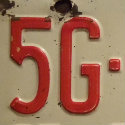
LONDON -- 5G World Summit 2018 -- European operators Swisscom and Three UK are moving aggressively to bring 5G services to market in the next couple of years, but they have played down expectations of a 5G-related boost in customer spending or a capital expenditure increase by their own companies.
In comments that will not be welcome to parts of the equipment industry, Bryn Jones, the Three UK chief technology officer, said he saw no reason for much increase in capital expenditure as his company starts to build a 5G network.
"Networks are like painting the Forth Bridge," Jones told an audience during a panel session at this week's 5G World Summit in London. "You roll out 2G and as soon as that is rolled out you start rolling out 3G. The capex is really substitutional and you manage within the envelopes."
The Forth Bridge is a cantilever bridge in Scotland that workers are constantly repainting to guard against rust. The analogy is apt in that operators start planning for the next generation of mobile technology as soon as they have finished investing in the current one.
Heinz Herren, the Swisscom AG (NYSE: SCM) chief technology officer, agreed with Jones that 5G investments could largely be managed within today's "capex envelope."
"With 5G there might be some incremental capex but if we are clever and add radios that can deal with 4G and 5G we will not see a big uplift in capex," he said on the same panel as Jones.
The remarks were broadly endorsed by Constantine Polychronopoulos, the chief technology officer of NFV at VMware, who said the growing use of software in telco networks would help to keep a lid on costs.
"We are moving toward software-defined radios and eventually upgrading a radio will just be a software exercise and a lot less costly," he said. "Virtualizing the network will address capex as well."
Figure 1:  Calm before the storm... the 5G World show floor just before the doors opened.
Calm before the storm... the 5G World show floor just before the doors opened.
The operators' comments may trouble major equipment vendors such as Ericsson AB (Nasdaq: ERIC), Huawei Technologies Co. Ltd. and Nokia Corp. (NYSE: NOK), which sell radio gear to operators worldwide and are hoping for a sales boost from 5G technology after the recent squeeze on telco spending.
Some uplift might come from the rollout of more sophisticated antennas, as well as investment in underlying fiber networks, Jones acknowledged. "When you look at massive MIMO, those antennas are heavier and bigger and there is more spending in that area than we had in moving from 3G to 4G," he said. "There is also a much higher requirement for fiber."
Massive MIMO is a so-called "smart antenna" technology that can boost the performance of 5G networks, but many operators are unlikely to use it outside densely populated communities. Indeed, the more widespread rollout of 5G networks could take around seven years, according to Swedish consulting company Northstream, as operators try to maintain capital intensity (or capital expenditure as a percentage of revenues) at current levels. (See NTT DoCoMo: Capex to Fall With 5G Rollout.)
Want to know more about 5G? Check out our dedicated 5G content channel here on
Light Reading.
That seems even likelier with operators forecasting little or no increase in customer spending when 5G becomes available.
"The Swiss market is flat and so it is really difficult to add 5G and sell it and personally I think we are having too many discussions around the business case," said Herren. "I think if your main business case is connectivity there is no question about doing 5G, but I don't think you will see additional ARPU [average revenue per user]."
Three's Jones similarly indicated that his main 5G focus is on providing a capacity boost on increasingly congested data networks.
Speaking to Light Reading in advance of this week's 5G World Summit, Arun Bansal, who heads up Ericsson's business in Europe and Latin America, said operators in major cities like London and Frankfurt are now running out of capacity on existing 4G networks.
"We have done analysis and in London between 20% and 30% of sites will run out of capacity next year," he said. "The only option is to use 5G to serve customers and reduce the costs."
Johan Wibergh, the chief technology officer of Vodafone Group plc (NYSE: VOD), has previously indicated that 5G could be a tenth as cost-efficient as 4G technology. Bansal said that kind of improvement was possible in ideal circumstances. "If everything aligns it is one tenth, but that is the best case scenario and depends on spectrum quantities," he said. (See Vodafone CTO: 5G Is Overhyped & It's Mainly About Cost.)
— Iain Morris, International Editor, Light Reading
Read more about:
EuropeAbout the Author(s)
You May Also Like




_International_Software_Products.jpeg?width=300&auto=webp&quality=80&disable=upscale)







